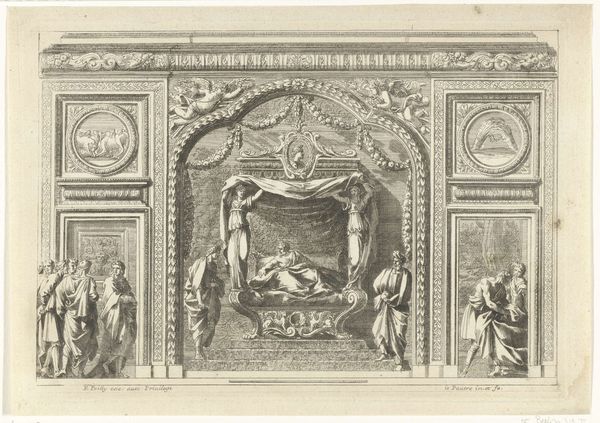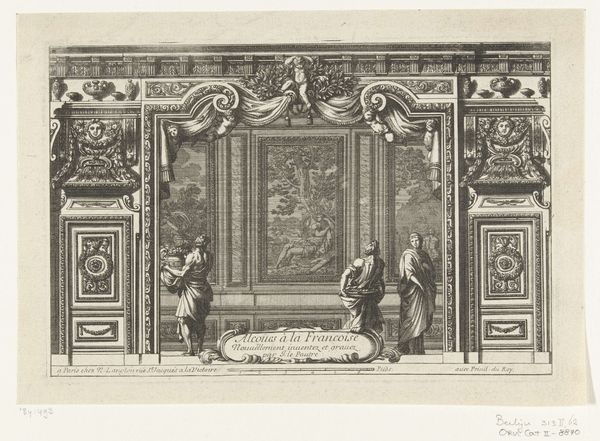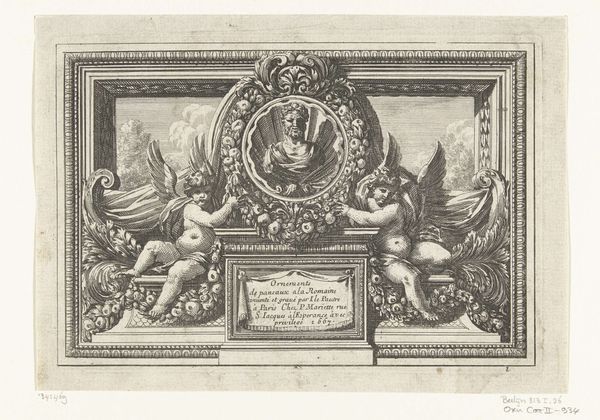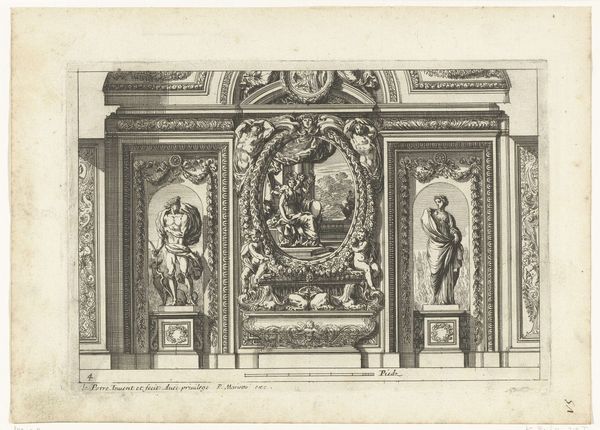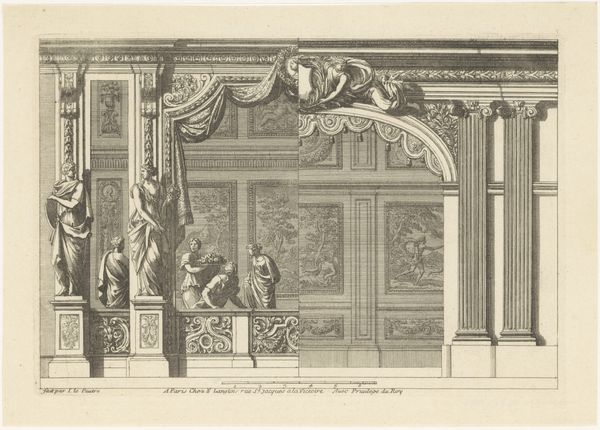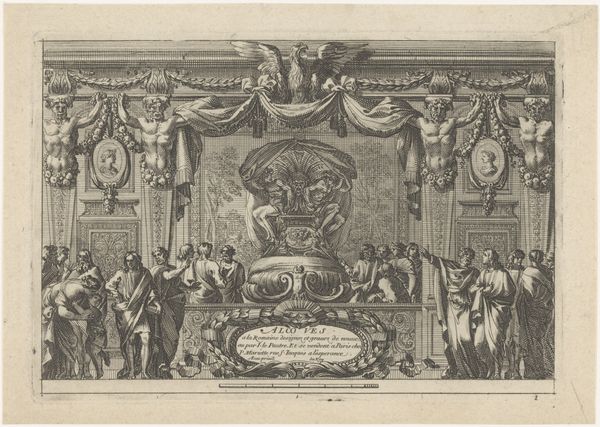
print, engraving, architecture
#
allegory
#
baroque
# print
#
history-painting
#
engraving
#
architecture
Dimensions: height 148 mm, width 213 mm
Copyright: Rijks Museum: Open Domain
Curator: This intriguing engraving is titled "Alkoof afgesloten door balustrade," or "Alcove closed by balustrade" created before 1690 by an anonymous artist. Editor: It looks like a theatrical backdrop! Stark, formal...the drama unfolding in a silent way. Curator: That’s an interesting observation, the baroque style truly lends itself to theatrical presentation. Let's examine its structure. Notice the carefully delineated planes, how the artist has meticulously rendered the architecture to suggest a sense of depth. Editor: I see that. And all the embellishment...the cherubs peeking from above, the figures flanking the alcove, portraits at the very edges like witnesses or players. But it feels remote, detached. Curator: Indeed. This work uses allegory, history, architecture to talk about the closed alcove. Think about what that space means historically...Privacy, secrets, contemplation or even conspiracy all held at bay by this beautifully rendered architectural composition. Editor: Right! But it makes me question the material too. I mean, why a print? What kind of intimacy could a print really evoke. The medium feels...clinical. Curator: Well, engravings like this would have allowed for much wider dissemination of architectural styles and ideas, sort of a proto design magazine! And I see those figures flanking the alcove with less formality – perhaps guardians, protectors, giving me a deeper connection. Editor: I see your point about design. It invites analysis, which, in turn, fosters awareness of our experience within space and makes the viewer an informed consumer. Curator: Ultimately, isn't that the magic of a compelling artwork: whether it be a quiet bedroom or one filled with spectacle. Editor: In its quiet way, this alcove feels oddly defiant. Almost rebellious in the stillness. Fascinating.
Comments
No comments
Be the first to comment and join the conversation on the ultimate creative platform.

